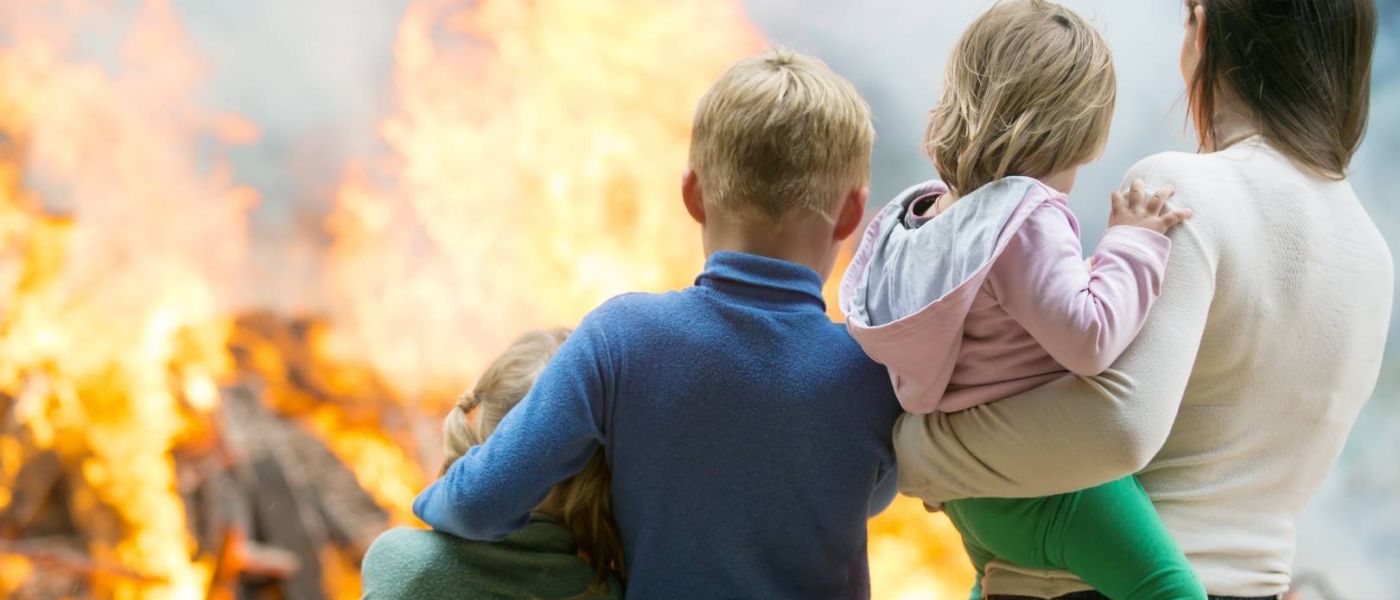Home Fire Prevention and Safety Tips

How to Prevent House Fires
- Don’t leave cooking unattended on the stove. If deep-frying or using a wok, make sure flames can’t get into the fat, and keep an eye on the temperature of the oil.
- Replace faulty or worn-out electrical appliances, and those with frayed cords.
- Use power boards instead of double adapters, and use safety switches wherever possible.
- Keep matches and lighters well away from children.
- Clean the lint filter on your clothes dryer every time the dryer is used.
- Allow your clothes dryer to complete its ‘cool-down’ cycle in order to prevent overheating.
- Make sure there’s airflow around your clothes dryer at all times.
- Enclose your open fire, pot bellied stove, gas or electric heater with a guard. You can test if it needs a guard by placing your hand on the surface: if it’s so hot you can’t leave your hand there for 10 seconds, it needs a guard to prevent contact burns to young children. You can secure a guard by attaching it to the wall.
- Clear space around your heater. Anything flammable – such as curtains, clothing, bedding and children’s toys – should never be within one metre of your heater.
- Turn off heaters at the power source. If you have a fireplace, extinguish the fire before you go to bed or leave your house.
- Check the gas cylinder on your barbecue regularly. Before lighting the barbecue, check the cylinder’s expiry date. Check also that the hose connections are tight and that there’s no leakage, and that the hose itself isn’t damaged or worn. Check the hose for signs of cracking.
Smoke Alarms
Smoke alarms give an early warning in the event of fire. These alert you quickly, and give you a chance to get out of the house to a safe location. Remember, only working smoke alarms save lives, so:
- Change the batteries once a year, when daylight savings ends
- Test your alarm regularly by pressing the test button
- Keep your alarm dust free – clean it every month
- Be aware that children under five don’t always hear smoke alarms.
A smoke alarm should be installed outside the sleeping areas of your home. For extra protection, you can also install a smoke alarm in your child’s bedroom and in the bedrooms of those who sleep with the door closed. Two storey houses often have sleeping areas upstairs – these must also have a smoke alarm downstairs, near the path used to exit the house.
Fire-fighting Equipment
- You can buy a fire extinguisher and fire blanket that conform to Australian Standards from a hardware store.
- Keep a fire blanket and/or fire extinguisher near the entrance to the kitchen, and know how to use them. Place them between the entrance/exit and the where a fire is most likely to occur.
- A 1 kg dry chemical fire extinguisher is suitable for most small household fires. Shake it occasionally to prevent the powder from settling.
- Household extinguishers are designed to be used only once – replace your extinguisher as soon as possible after use.
- Never use water to put out an oil, electrical or fat fire.
- Have an electrical safety switch installed (this must be installed by a registered electrician).
Be Prepared for a House Fire
- Practise a home escape plan with your children and family. Choose a meeting place outside the house and make sure everyone knows to meet there.
- Reinforce the ‘stop, drop, cover and roll’ drill in case children’s clothes catch fire.
- Reinforce the ‘get down low and go, go, go’ escape drill for crawling under smoke and poisonous gases.
- Make sure you have two exits from every room in the house.
- Never deadlock doors when you’re at home.
- Dial 000 and ask for the fire brigade in an emergency. Know your address and the closest cross street.
- In the event of a fire, keep a close watch on children once outside to make sure they don’t run back into the house.
Using an Extinguisher
Be familiar with the extinguisher’s directions before you need to use it. Use an extinguisher if:
- You can extinguish the fire quickly
- You’re not putting your life at risk by staying near the fire
- Everyone else has left the area
- You know your extinguisher is suitable for putting out the type of fire you’re facing.
Once you’ve used your extinguisher, call 000 so firefighters can investigate. For example, the fire could have travelled up the fan area and into the ceiling without you realising.
Using a Fire Blanket
Be familiar with the blanket’s directions before you need to use it.
- Use a fire blanket to smother fires in cooking fat, or to wrap around people if their clothes catch alight.
- In a pot is burning, don’t throw the blanket over it – instead, place it over the pot and fire.
- Turn off the heat source and leave the blanket over the pot. Don’t remove the blanket – the firefighters will do this.
- Dial 000 to call the fire brigade.
Disaster Clean Up & Repairs
Westaway Restorations provide Water & Storm Damage, Fire & Smoke Damage, Mould Remediation and Trauma & Crime Scene Clean Up Services to the Gold Coast, Brisbane and Northern Rivers Regions.
 07 5598 3292
07 5598 3292